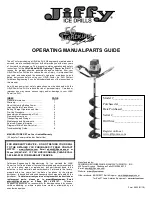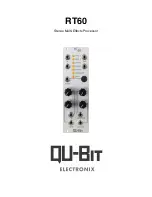
© 2018 Valeport Ltd
0606829a - MIDAS CTD+
Page 8
2.5. Sample Lifetime Calculations
2.5.1. Based on Memory
Lifetime based on memory is simple to calculate. Conductivity, Temperature, Pressure, Turbidity, DO
and pH values use 2 bytes of memory per sample. Therefore total memory used per record is (6 x 2)
= 12 bytes. Note that in Trip mode, each record is also assigned a date/time stamp, which uses a
further 7 bytes.
The 8 Mbyte memory actually contains 8,388,608 bytes. Allowing a small amount of memory usage
for header files, the memory will store over 430,000 records in Trip sampling mode, and over 1 million
records in all other modes.
The length of time that this will last for obviously depends on sampling scenario. Here are three
examples:
2.5.1.1. Continuous Data Sampling - 8Hz
Memory used per second is 8 x 12 bytes = 96 bytes.
Total memory fitted is 8,388,608 bytes.
Number of seconds before memory full is 8,388,608 / 96 = (approx) 87,381 seconds.
This is equivalent to 24 hours.
This period can be doubled by sampling at 4Hz.
2.5.1.2. Burst Sampling - 4Hz (sampling for 1 minute every 10 minutes,
recording all data points)
Memory used per burst is 12 bytes x 4Hz x 60 seconds = 2880 bytes.
The memory will therefore be full after 8,388,608 / 2880 bytes = 2912 bursts. At a 10 minute cycle
time, this is 29120 minutes, which is equivalent to 20 days.
2.5.1.3. Trip Sampling - 6000m Cast (measurement every 1 metre)
In this example, the instrument will take 1 reading every metre of both descent and ascent. This
means 6000 data points descending, and a further 6000 ascending. Each record consists of 12 bytes
of data and 7 bytes of time stamp. Each record therefore uses 19 bytes. A single cast will take 12,000
such records and will, therefore, use 228,000 bytes.
The 8Mbyte memory will therefore hold approximately 35 casts of data.









































